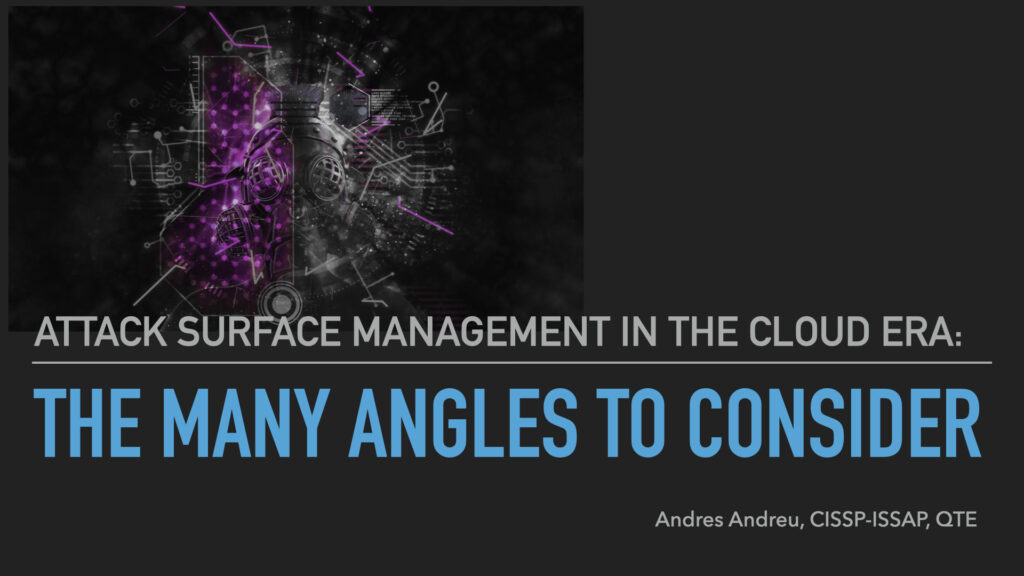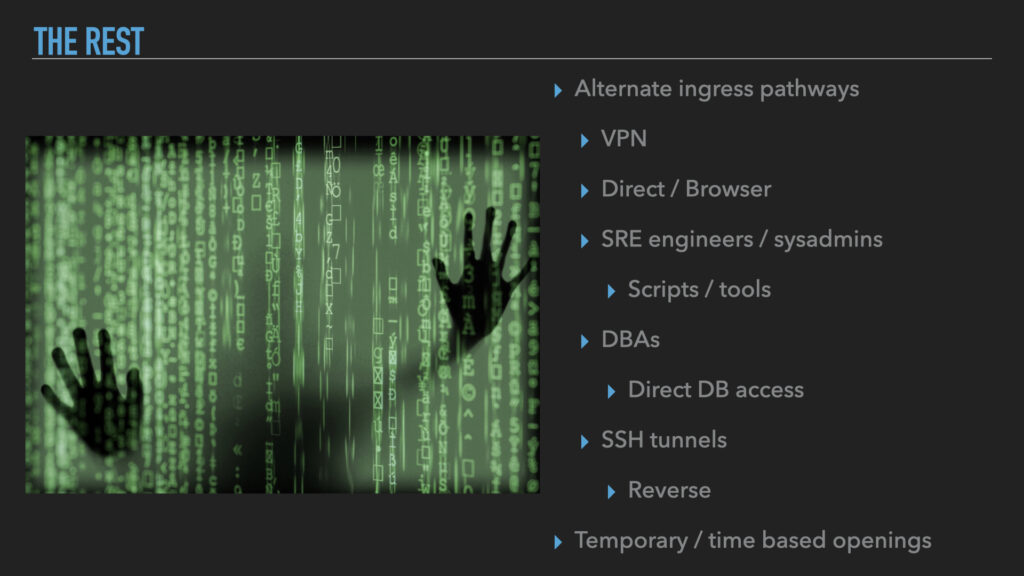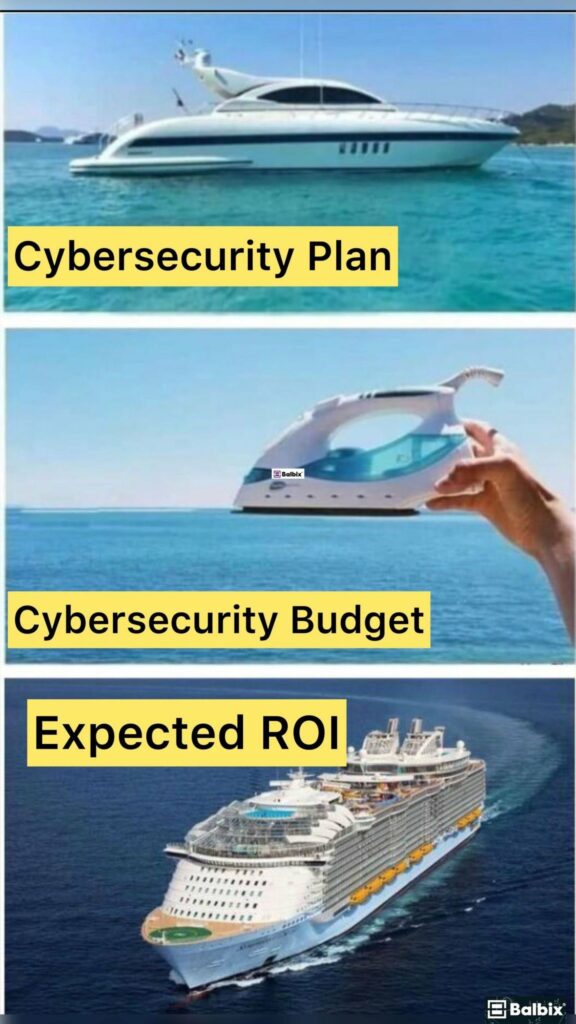Attack Surface Management in the Cloud Era: The Many Angles to Consider. This was the title of my talk on a invitation-only conference (2/21/2023) with “Executive Insights”. In this blog I share the material while trying to recount what I actually said during the live session. The session was 15 minutes long with 5 minutes of Q&A. Hence, the content is not intended to be granular or exhaustive.
Note: This is an ultra important topic for cybersecurity leaders who are truly focused on understanding their ecosystem and where to focus protective resources (human and dollars).

Slide 1
Attack surface management is a complex endeavor. Unfortunately a number of products in this space have marketed very well. In turn, some people in cybersecurity think that the purchase and deployment of some specific product actually gives them a handle on their attack surface. What I would like to share with you now are some angles to consider so that you may possibly expand your program to cover your organization in a more thorough way.

Slide 2
External perspective
The overt, and best known, space in regards to attack surface management is that of the external perspective. By that I mean what your organization looks like to the outside world, in particular to nefarious actors. This outside-in perspective generally focuses on public internet facing resources, especially for businesses that actually sell, or host, web based products. The angles here mostly focus on which hosts are public facing and in turn what ports are actively listening per host. A good solution here actually probes the listening ports to verify the service being hosted. For the sake of accuracy and thoroughness please don’t assume that everyone adheres to IANA’s well known port list. It is entirely possible, for instance, to host an SSH server on TCP port 80 and that would inaccurately imply that a web server is at play.
Shadow IT
A benefit of focusing on this outside-in angle is that it is a great way to expose shadow IT elements, if they exist and are hosting in a public facing capacity. I should also state that for this set of angles to be effective this has to be a continuous process such that new public facing hosts and ports are discovered in a rapid fashion. There are many products that serve this space and provide relevant solutions.
B2C / B2B
From the external perspective the natural focus is on the Business to Consumer (B2C) angle. This is where the space is predominately based on end-users/customers and web applications. All of what makes up a web app stack comes into play there. But from a Business to Business (B2B) perspective there is the lesser familiar area of APIs. Whether you run a REST shop or a GraphQL shop there are unique challenges when protecting APIs. Some of those challenges revolve around authentication, authorization, and possible payload encryption in transit. For instance is TLS enough by way of protecting data in transit? Or do you consider an orthogonal level of protection via payload encryption, something like JSON Web Encryption (JWE) (if you use JSON Web Tokens (JWT)) for instance. It’s certainly an angle that needs consideration.

Slide 3
Covertly there are a number of angles that require attention. Starting with the humans lets focus on insiders (meaning inside of your network).
Insiders
There are threats and employees. Sometimes an employee becomes a threat and the angle here is that they are already inside your network. This angle is typically one where there is high risk because employees have authenticated access to sensitive systems and data. To complicate this, enter hybrid or work from home setups. Now your attack surface has expanded to areas outside of your control. Home networks are clearly high risk environments but since our traditional network perimeters no longer exist, now those home networks are part of your attack surface. Imagine a home network with kids downloading all kinds of crazy stuff. Then imagine a user that has your hardened work laptop at home. Then imagine the day that person feels like accessing work content from their personal machine. Or better yet they figure out how to copy crypto certificates and VPN software to their personal machines. Now the angle is an insecure machine, with direct access to your corporate network, that in turn has direct access to your cloud environments.
Non-generic computing devices
In reference to non standard computing devices there are risks based on this equipment being generally unknown to traditional IT teams. Imagine the HVAC controllers, or motors, or PLCS, required to operate the building you work in. Most of those devices are networked with IP addresses, they typically reside on your network and are part of your attack surface. Now let’s also consider the administrators of said equipment and the fact that they have remote access capabilities. Some VPN paths bring traffic in via your cloud environments with paths back to the building equipment. That is one angle. Then there are direct remote access scenarios, which put people on to your network and in turn there is the possibility of access to your cloud environment. Misconfigurations like these happen all the time and are angles to be considered when studying your attack surface.
SaaS
Supply chain angles are now a big thing. Actually they have been for some time but recently they are getting a lot of industry attention. Let’s start with SaaS solutions. Are they your responsibility from a security perspective? Maybe, maybe not. But, your data goes into these systems. While it is an organizationally subjective decision if your data in a SaaS solution is part of your attack surface, it is an angle to consider. You should at least scrutinize the security configuration of the SaaS components that get accessed by your employees. The goal is to make sure the tightest security configurations possible are in use. Too often consultants get brought in to set SaaS environments up and they may take the easiest path to a solution, meaning the least secure. It happens.
SaaS integrations are even riskier. Now your data is being exchanged by N number of SaaS solutions outside of your control and again, it’s your data being sent around. Were those integrations, typically API based, configured to protect your data or purely to be functional? After all my years in the industry, I can tell you what I have seen puts me in the cynical category based on people doing what is most secure on your behalf.
FOSS
Part of modern day supply chains is open source code. We all know of the higher profile cases that involved negative events based on abuse of things like open source libraries. The angles here vary but I assure you most cloud environments are full of open source code. It is an angle that cannot be avoided in the modern world.

Slide 4
Alternate ingress pathways
A typical cloud setup only accepts sensitive network connectivity from specific networks. This is by design so that sensitive communication paths, like SSH, are not accessible via the public internet. Typically these specific networks are our corporate networks and those, in turn, get remotely accessed via VPNs. Or it could also be the case that your VPN traffic itself flows into, and/or through, your cloud environment. So an angle to scrutinize is exactly where do VPN connections get placed on your network. This may be leaving pathways open to your cloud infrastructure.
Another pathway of concern is direct, browser based, access to your cloud infrastructure. A successful authentication could give a user a privileged console for them get work done. If this account gets compromised then there is substantial risk. The real danger with this ability is that it facilitates users to log in and do their work from personal machines that may not have the same protective controls as a work computer.
Privileged Users
SRE engineers and sysadmins typically have elevated privileges and the ability to make impactful changes in cloud environments. The scripts and tools they use need to be considered as part of your attack surface because I am sure your teams didn’t write every piece of software they use. And so these scripts, the SRE engineers machine, etc all become possible alternate access paths to sensitive elements.
DataBase Administrators (DBA) are valued team members. They typically have the most dangerous levels of access from a data perspective. This is obvious given their role but this also should raise your risk alarms. Imagine a DBA working from a home based machine that for instance has a key logger on it. This is a machine that will also have data dumps at any given time. And of course we all know that DBAs and software engineers always sanitize data dumps for local working copies *[Sarcasm]*.
Git
Git – there are so many known examples of sloppy engineering practices around hard coded, and in turn, leaked elements of sensitive data. One important angle to study is the use of secrets managers. Analysis must take place to sniff out hard coded credentials, API keys, passwords, encryption keys, etc and then ensure re-engineering takes place to remove those angles from your attack surface. The removal obviously being a migration to use a secrets manager as opposed to statically storing sensitive elements where they are just easy to access.
SSH
SSH tunnels and back-doors are both interesting and challenging. Unquestionably they represent a set of angles you need to hone in on. Detecting if some SSH traffic is a reverse tunnel is not trivial. But from an attack surface perspective you can hardly point a finger at something that introduces this much risk. This scenario can expand your attack surface in a dangerous and stealthy way.
Ephemeral port openings
Temporary openings are a real problem. Ephemeral entities within cloud deployments are challenging enough but the legitimate ones are typically not public facing. So for example let’s say you have containerized your web servers. And you are using elastic technology and possibly orchestration to successfully react to traffic spike. That is an ephemeral use case that is acceptable, and typically behind protective layers (Web App Firewall, etc). But what happens when the human factor creates bypasses to controls in order to facilitate ease of use in a specific scenario.
Story – In talking with some members of a start-up playing in this space they were telling me about one of their interesting findings on a project. They discovered a case where a specific host, on a specific port, was open on specific days for a limited amount of time. Their investigation led to the finding of the SRE and DBA teams having an automated process to allow for the running of a remote maintenance script hitting a database server directly. The SRE / DBA teams felt it was such a limited exposure that there was no risk. Interesting angle from an attack surface perspective and maybe one more people need to look for.

Slide 5
Data
Data. The real target and the heart of our challenges. This is also where multiple angles exist. Let’s start with some simple questions, each one should make you realize the angles at play …. In regards to all of the data you are responsible for, do you definitively know where it all is? Do you know all of the databases at play? Do you know every storage location where files are stored? Within those answers, do you truly know where all of your Personally Identifiable Information (PII) and/or Protected Health Information (PHI) data is? If you don’t then those are angles you need cover ASAP.
Once you know where the data is … then for each location you need to at least map ingress pathways. What can touch database X? Web apps, admin scripts, APIs, people? And what about egress pathways? Once someone touches a data store how can they exfiltrate? The angles within the ingress / egress challenge can be vast and some skilled analysis needs to take place in order to properly understand this part of your attack surface.
In Transit
Another data related angle to consider is that of your data in transit. But not to the outside world, on the inside of your cloud environment. More often than not the following scenario is real …. You have strongly protected TLS 1.2+ streams from the outside to a tier of load balancers controlled by your cloud provider. The load balancers terminate the relevant sockets and in turn terminate the stream encryption at play. From that point to the back-end all of the streams are in the clear. A lot of people assume that is a trusted part of the network. I am not in the business of trust and so that angle bothers me and I push for encrypted streams on the inside of my cloud environments. Otherwise that part of your attack surface is susceptible to prying eyes.
Meta-data
Finally I would like to stress the potential value of proper analysis of meta-data. Take encrypted channels of communication as an example. If an encrypted egress path is identified then some skillful reconstruction of meta-data can yield some valuable intelligence even though you obviously can’t see the content that was moved along the discovered channels.
Thank you for having me, I will take questions now …



